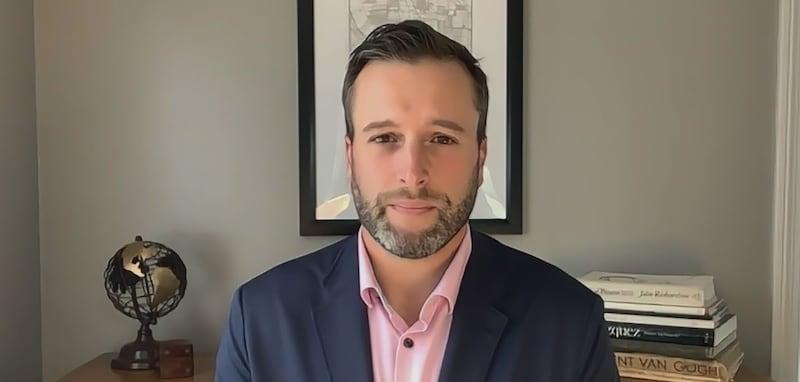Drew Pettit, director of U.S. equity strategy at Citi, joins BNN Bloomberg to share Citi’s take on global equities.
Global equities continue to hover near record highs as investors weigh tariff impacts, a slowing U.S. labour market and the offsetting boost from Federal Reserve rate cuts. Citi says market gains are likely to broaden as earnings growth spreads across regions, sectors and styles.
BNN Bloomberg spoke with Drew Pettit, director of U.S. equity strategy at Citi, about the firm’s constructive outlook for global equities, the risks from stretched valuations, and why broader earnings participation is key to sustaining the rally into 2026.
Key Takeaways
- Citi Research expects about 5 per cent upside for global equities through mid-2026.
- Broader earnings growth is emerging across regions, sectors and styles, signalling a more balanced rally.
- Stretched valuations could limit upside if earnings per share don’t meet expectations.
- Fed easing should support cyclical, value and small/mid-cap leadership through 2026.
- Emerging markets and continental Europe remain Citi’s preferred regions for cyclical and AI-driven growth.
 Drew Pettit, director of U.S. equity strategy at Citi Drew Pettit, director of U.S. equity strategy at Citi
Drew Pettit, director of U.S. equity strategy at Citi Drew Pettit, director of U.S. equity strategy at Citi
Read the full transcript below:
ROGER: Equity markets have been at all-time highs this month despite debates over the impact of tariffs, a slowing U.S. labour market, and the offsetting tailwind from Federal Reserve rate cuts. Citi remains constructive on global equities, saying markets continue to broaden with strong growth in earnings per share across regions. Let’s get more on this from Drew Pettit, director of U.S. equity strategy at Citi. Drew, thanks very much for joining us today.
DREW: Glad to be here, Roger.
ROGER: What’s the main reason for the optimism right now?
DREW: We’re finally seeing growth acceleration. For a while, it was really just a one-horse race — the United States had growth — and even with tariffs and concerns, the secular growth trends were pushing earnings higher. Looking ahead to 2026, you’ll see Japan and Europe contributing, even though they hadn’t before. Sector-wise, you’ll also see contributions not just from growth, but from cyclicals and defensives across regions. So this broadening isn’t just a U.S. story or a Europe story — it’s a global story, both regionally and sectorally.
ROGER: Is that a case of people just looking for deals elsewhere since it’s hard to find much value in the U.S. right now?
DREW: Not really. There aren’t many real “deals” in any good growth story globally. What’s happening is we’re finally getting the earnings tailwind to justify valuations. In the U.S., people often talk about a bubble forming — we don’t think we’re there yet. But globally, valuations versus history aren’t cheap either. They are relatively cheaper than the U.S., but it’s not about bargains. It’s about fundamentals driving prices higher. From here, it’s all about earnings.
ROGER: What do you want to see when it comes to earnings? What gets you interested?
DREW: It’s about finally seeing the downward revisions for 2025 and 2026 come to an end. That’s been huge coming out of the “Liberation Day” lows when tariff impacts were being worked into estimates and numbers were falling across regions. Now, we’re on the other side of that. We’re seeing currency stabilization, which matters a lot for international companies, and macro conditions outside the U.S. are stabilizing after soft recessionary periods. All of that’s important. Revisions moving higher will confirm the earnings acceleration we want to see.
ROGER: Let’s talk about the U.S. Are you expecting another year of double-digit growth in 2026?
DREW: Yes — and for once, it’s not just the Magnificent Seven driving it. Other sectors are contributing. Financials have been on a good run with solid early results, even if the price action has been choppy. You’ll also see earnings growth inflect for consumer companies, which have been under pressure, and continued strength for financials. Even energy, off a low base, will be a positive contributor. So next year, the 12 to 14 per cent earnings growth we’re forecasting will be a group effort — not just tech giants pulling the rest of the index along.
ROGER: How important is that breadth to you?
DREW: It’s massive. Narrow markets can’t push much higher without inflating bubbles. When we have breadth and more opportunities, it takes the pressure off growth to be the only engine in U.S. markets. It also creates room for healthy profit-taking and reinvestment into new growth stories. That even brings small caps back into the conversation, which have been quiet for the last few years. Broadening earnings are critical for another leg higher in this bull market.
ROGER: You’re overweight in continental Europe and emerging markets. Is there a particular focus area, or is everything looking good right now?
DREW: Those are our weights because they balance cyclicals and growth. Emerging markets give you strong AI-driven growth stories, while continental Europe offers more cyclical exposure. But the bigger story hasn’t been regional. Over the past two quarters, the gap between the best- and worst-performing regions has been narrow. The real differentiation is at the sector level. We like cyclicals — especially financials — and also growth, particularly tech.
ROGER: Why has performance been so evenly spread? Any indicators?
DREW: It comes back to earnings revisions. We talk so much about valuations, but earnings are the true long-term driver of markets. With more positive earnings contributions, we’re seeing less dispersion between indices. As growth broadens, performance differentials narrow too.
ROGER: We’re in the middle of earnings season. Any indicators it might flatten out, or reasons for concern?
DREW: The concern is we’ve priced in a lot of good news. Valuations are stretched, and if sentiment shifts on some structural themes, that’s a longer-term risk. We’re positive on productivity, margins and secular growth trends, but in the short term, management teams are becoming cautious after the market’s run. Lowering the bar for 2026 guidance could lead to some profit-taking — but that’s healthy. Expect some near-term volatility and use it as a buying opportunity. The structural growth story remains intact.
ROGER: Drew, thank you very much for joining us today. Have a great weekend.
DREW: You too, thank you.
ROGER: That was Drew Pettit, director of U.S. equity strategy at Citi.
—
This BNN Bloomberg summary and transcript of the Oct. 17, 2025 interview with Drew Pettit are published with the assistance of AI. Original research, interview questions and added context was created by BNN Bloomberg journalists. An editor also reviewed this material before it was published to ensure its accuracy and adherence with BNN Bloomberg editorial policies and standards.
